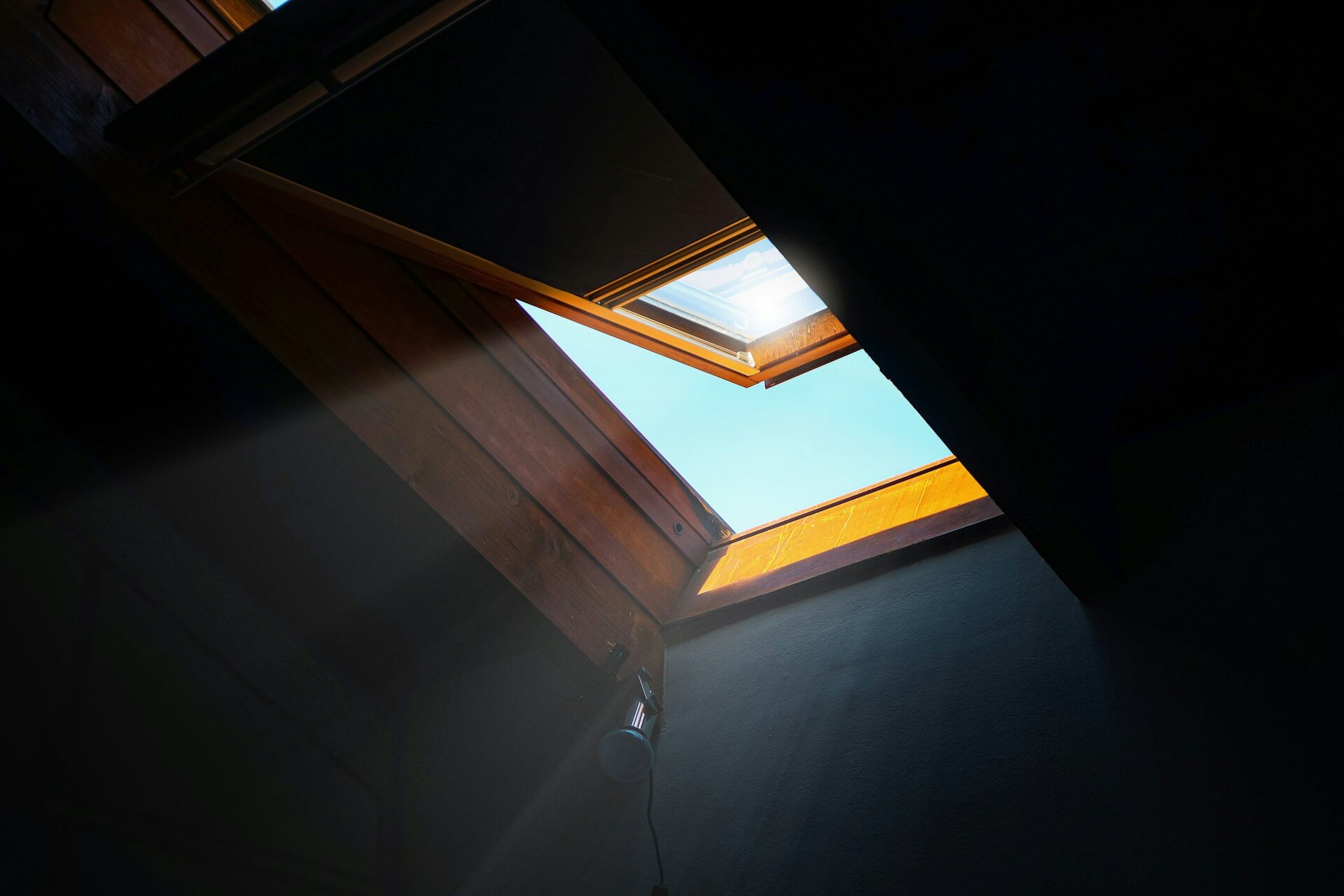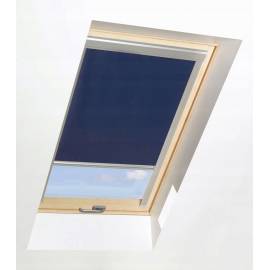Maintaining a comfortable climate in a converted roof space is a common challenge for homeowners across the UK. Without the right strategies, this extra space can become an oven on hot days and an icebox during the colder months. Learning how to keep a loft cool in summer while retaining heat in winter ensures that it remains usable all year round.
Table of Contents
Why Do Lofts Suffer from Temperature Extremes?
Lofts experience extreme temperatures because they are located directly under the roof where heat transfer is most intense. Physics dictates that hot air rises, causing it to accumulate in the highest point of your house. This natural movement of air makes the loft space significantly warmer than living areas on the ground floor.
During summer, the sun acts directly on the roof tiles, transferring radiant heat through the structure and into the room. This solar gain creates a build-up of excess heat that is difficult to disperse without intervention. Conversely, in winter, as heat rises from the lower floors, it escapes through the large surface area of the roof if insulation is poor.
The Role of Insulation in Year-Round Temperature Control
High-quality insulation acts as a thermal barrier that slows down heat flow to keep your loft cool in summer and warm in winter. Proper insulation works by trapping pockets of air, which inhibits the transfer of thermal energy between the outside and inside. This creates a more stable internal environment.
Installing insulation is not just about keeping warm. It is equally vital for reducing heat transfer during a heatwave. A well-insulated roof prevents the sun’s heat from penetrating the living space. This ensures your loft conversion remains a comfortable temperature even when the external temperature rises. Loft insulation is ultimately a great investment, as it makes your home more energy efficient and reduces your bills.
Types of Loft Insulation
Selecting the right material is crucial for maximising energy efficiency and comfort. Different materials offer varying benefits depending on your roof structure.
Consider these common options:
- Mineral Wool: This is widely used between rafters. It provides excellent soundproofing alongside thermal benefits, making it a cost-effective solution for many standard loft spaces.
- Rigid Foam Boards: This acts as a high-performance insulation board. It offers superior thermal resistance in a thinner profile, which saves valuable headroom in a loft conversion.
- Multifoil Insulation: This consists of layers of foil and wadding. It reflects radiant heat, making it particularly effective for preventing summer overheating and reducing heat transfer.
Roof U-Values and Thermal Efficiency
A U-value measures how easily heat passes through a material, with lower numbers indicating better insulation. When selecting materials or roof windows, you must look for the lowest possible U-value to ensure energy efficiency. To comply with UK Building Regulations (Part L), a pitched roof with rafter-level insulation must have a U-value of 0.18 W/m²K. This usually requires the installation of around 125 mm of rigid PIR foam or 270 mm of mineral wool.
The choice of glazing is equally critical, as high-performance triple-glazed roof windows can achieve U-values as low as 0.5 W/m²K. This is significantly better than the average U-value of around 1.3 W/m²K for standard double glazing. Upgrading to these efficient units can reduce heat loss through the glass by 40 – 50%.
How to Keep a Loft Cool in Summer
Effective cooling involves a combination of strategic ventilation, shading, and minimising internal heat sources. You must prevent summer heat from entering while simultaneously encouraging hot air to escape. This proactive approach makes a big difference during a heatwave.
Loft Ventilation Strategies
Proper airflow management allows hot air to escape while drawing cooler air in from outside. Good ventilation also prevents moisture build-up and mould growth in the loft. Follow these steps to ensure your loft conversion is well ventilated:
- Time Your Windows: Keep windows closed during the hottest part of the day to keep the hot air out. Open windows early in the morning or late in the evening when the air is fresher.
- Utilise the Chimney Effect: Open a vertical window on a lower floor and a roof window in the loft. This creates an upward draft that naturally flushes out stale, warm air and replaces it with fresh air.
- Enable Cross Ventilation: Open windows on opposite sides of the room. This allows a breeze to pass through the loft space, preventing heat build-up and lowering the ambient temperature.
Window Treatments and Shading
Installing blinds and shutters prevents solar gain by blocking sunlight before it heats up the room. External accessories are particularly effective as they stop the sun’s heat from reaching the glass pane in the roof window.
Here are the most effective solutions:
- External Anti-Heat Shutters: They offer robust protection against the elementsblocking up to 96% of heat before it enters the room. This provides immediate relief on very hot days, keeping your loft cool and dark.
- Blackout Blinds: These are essential for internal shading. They block direct sunlight during peak hours, preventing the greenhouse effect inside your loft conversion.
- Awning Blinds: These sit on the outside but allow light in. They reduce passive heating while still letting you see the view.
Other products in category: Blinds & Accessories
£52.50 tax excl.
Other products in category: Blinds & Accessories
£52.50 tax excl.
Glazing Solutions
Advanced glazing reduces the amount of solar energy that enters the loft space through the glass. Modern roof windows are designed with coatings that reflect UV rays and infrared heat.
Installing triple glazing provides an extra layer of thermal protection. This creates a more effective barrier against external temperature fluctuations.
Active Cooling Systems
Mechanical cooling devices are used to lower the temperature when passive methods are insufficient. While not always necessary, they offer greater control in extreme weather conditions.
- Portable Fans: These improve comfort by circulating air to create a wind chill effect. They help move air that might otherwise become stagnant in corners.
- Portable Air Conditioners: For very hot days, a portable unit can actively remove heat. They are effective for immediate temperature reduction in a specific loft room.
How to Keep a Loft Warm in Winter
Retaining heat relies on sealing gaps and utilising efficient heating sources designed for loft spaces. Once you have secured the thermal envelope, maintaining warmth becomes significantly easier and cheaper.
Heating Options for Loft Conversions
Choosing the right heating source is vital for comfort during the colder months. The two most popular choices offer distinct advantages:
- Radiators: These heat up quickly and are easy to control with thermostatic valves. They provide a rapid response when the temperature drops in the evening.
- Underfloor Heating: This system provides a uniform distribution of warmth across the entire floor area. This eliminates cold spots and frees up wall space. You enjoy the luxury of walking on warm floors and more flexibility with furniture placement.
Eliminating Drafts and Air Leaks
Sealing gaps around windows and hatches prevents cold air infiltration and heat loss. Even small gaps can undermine the performance of your heating system.
Check these key areas:
- Roof Windows: Inspect the perimeter seals for signs of degradation. A poor seal will cause warm air to escape rapidly.
- Loft Hatch: Insulating the loft hatch is often overlooked. A draughty hatch acts like an open window, sucking warm air out of the house.
- Service Penetrations: Check where pipes or cables enter the loft. Use expanding foam or sealant to close these gaps.
Decor and Soft Furnishings
Heavy textiles and warm floor coverings add a layer of insulation and physical warmth to the room. Hard surfaces can feel cold to the touch and do not retain heat well. Thick rugs act as insulators for the floor. They stop cold air rising and trap warmth in the room. This makes the living space feel instantly cosier and more inviting during winter evenings.
Smart Technology for Loft Climate Control
Automated climate control systems use intelligent sensors to monitor temperature, CO2, and humidity levels in real time. This technology automatically adjusts your roof windows and blinds based on environmental data, removing the need for constant manual checks. You enjoy a comfortable living space while integrated rain sensors ensure your home stays dry and secure, even when you are away.
Creating a Balanced Loft Environment
A stable climate requires a comprehensive approach that combines insulation, ventilation and smart behaviours. Practical tips such as keeping windows closed on hot summer days and sealing draughts in winter are fundamental to comfort. However, the effectiveness of these strategies relies heavily on the quality of your fixtures.
Investing in high-quality Sunlux roof windows guarantees that your loft will work properly in all conditions. Our products are designed to withstand the rigours of the British climate. With the right setup, your extra space becomes a true asset to your home.


